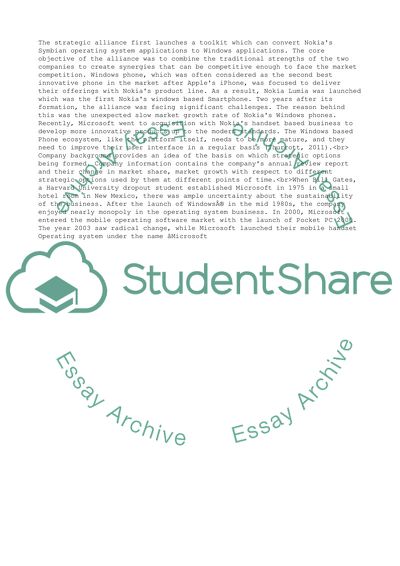Cite this document
(Microsoft Strategic Alliance With Nokia Essay Example | Topics and Well Written Essays - 5000 words, n.d.)
Microsoft Strategic Alliance With Nokia Essay Example | Topics and Well Written Essays - 5000 words. https://studentshare.org/business/1819521-microsoft-strategic-alliance-with-nokia
Microsoft Strategic Alliance With Nokia Essay Example | Topics and Well Written Essays - 5000 words. https://studentshare.org/business/1819521-microsoft-strategic-alliance-with-nokia
(Microsoft Strategic Alliance With Nokia Essay Example | Topics and Well Written Essays - 5000 Words)
Microsoft Strategic Alliance With Nokia Essay Example | Topics and Well Written Essays - 5000 Words. https://studentshare.org/business/1819521-microsoft-strategic-alliance-with-nokia.
Microsoft Strategic Alliance With Nokia Essay Example | Topics and Well Written Essays - 5000 Words. https://studentshare.org/business/1819521-microsoft-strategic-alliance-with-nokia.
“Microsoft Strategic Alliance With Nokia Essay Example | Topics and Well Written Essays - 5000 Words”. https://studentshare.org/business/1819521-microsoft-strategic-alliance-with-nokia.


